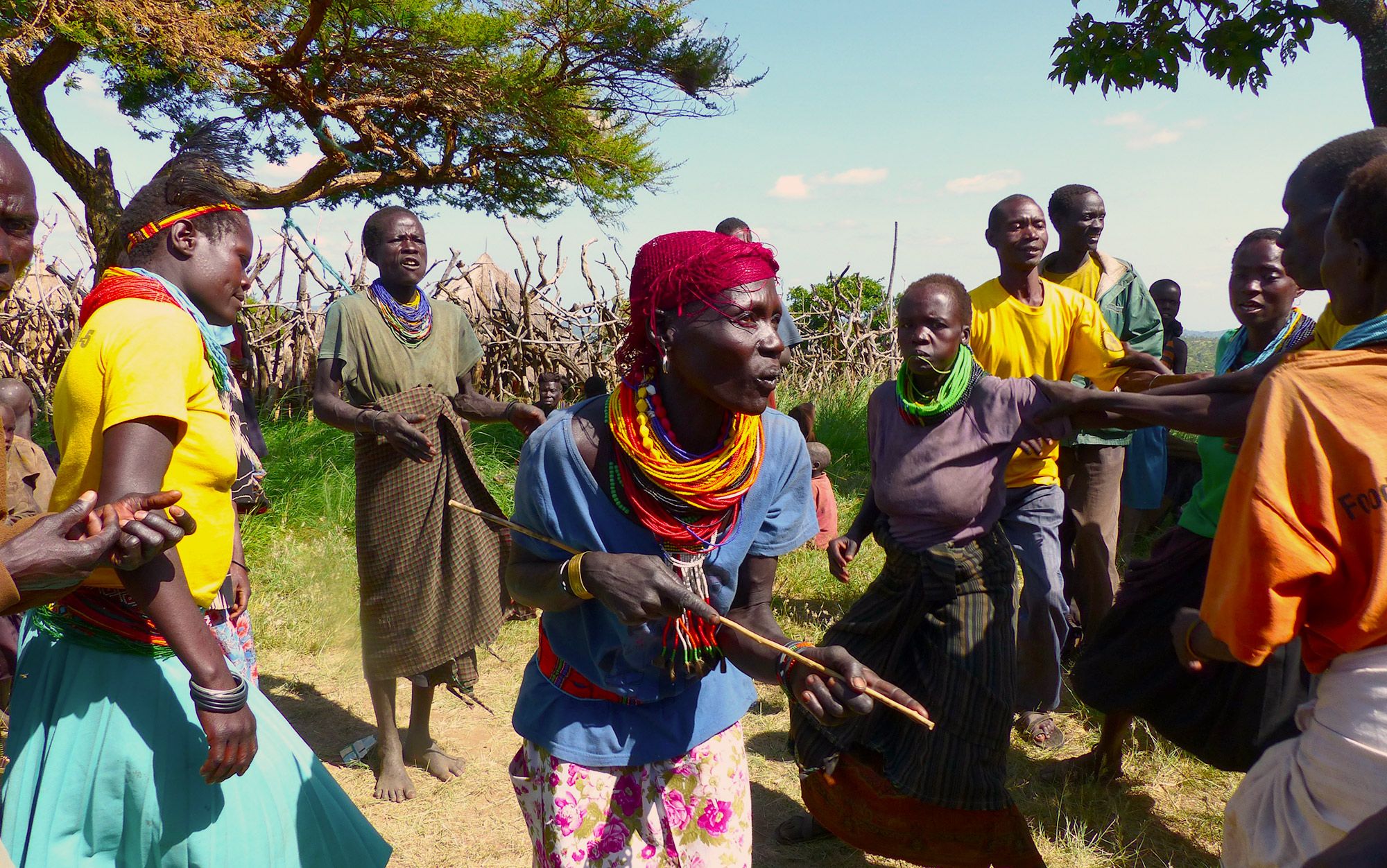by CATHRYN TOWNSEND

The Ik – among the poorest people on Earth – have been cast as exemplars of human selfishness. The truth is much more startling
Slabs of sunlight break through the mist, illuminating the bright pastel ripples of Oribo Valley, the valley I’m named after. I’ve been given this name by the Ik people I’m living with, in the remote highlands dividing Uganda, Kenya and South Sudan. The Ik woman I’m interviewing, Nangole (a pseudonym to protect her identity), rubs her baby’s arms and legs to soothe the scabies rash that covers the infant’s skin. She tells me how she came to live here, in a little mud hut with a vista of the valley.
Nangole was born a Turkana, an ethnic group of herders whom the Ik greatly fear. But as a little girl living in Kenya, her village was attacked by roaming Toposa warriors from South Sudan; her father and many others were killed. Starvation and an epidemic afflicted the survivors, so Nangole’s mother and aunt took flight into the mountains of Uganda, with Nangole trailing their heels. High above the plains, mother and daughter found safety in an Ik village. The small community took them in. Nangole grew up in the village and eventually married an Ik man. Today, they have eight children. Her life is a story of refuge – from disease, from hunger, from the cattle-raiding warriors who live on the plains below – and of generosity. The Ik gave her a home.
In the 1970s, The New York Times described the Ik as ‘a haunting flower of evil’ in ‘its corner of civilisation’s garden’. The vilification didn’t start or end there. The physician and science journalist Lewis Thomas in 1973 argued that the ‘unremitting, compulsive repellence’ of these ‘unattached, brutish creatures’ was the result of an ‘exploded culture’ in which each Ik was a ‘one-man tribe’. It was widely argued that the Ik revealed how humans are essentially malicious when stripped of the constraining effects of decent civilisation. They exemplified ‘how little natural goodness lies at the bottom of the human heart’, as the author of that New York Times article, Christopher Lehmann-Haupt, put it: a cautionary tale to the civilised world about the fragility of human kindness.
Aeon for more